Dry food for puppies: features, selection and feeding rules

There is a huge physiological difference between adult dogs and puppies, therefore, in matters of feeding, it should be taken into account when drawing up a puppy's diet so that its development is more harmonious.
And also there are features associated with the breed, pedigree and other factors. High-quality dry food contains not only natural meat and carbohydrates, but also useful trace elements and essential vitamins.

Feed composition
The composition of food depends on many parameters, such as price segment, types of specialized diets, dog breed.
The following elements must be present in the feed:
- natural meat (with lamb, poultry or beef);
- vegetables fruits;
- vitamins;
- minerals;
- the right carbohydrates (cereals).
The presence of the following components in the feed is undesirable:
- soy protein;
- preservatives, surrogates;
- palm oil and similar fats.
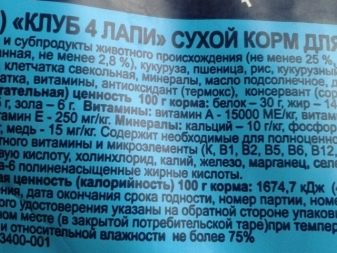

The main indicator of quality is the proportion of animal protein in the feed, but it should not be too much, as excessive consumption of this component can cause allergies in the puppy.
Economy class feed formulations are rich in by-products and soy protein, but nutritional compositions, the class of which starts from premium and higher, contains a large amount of natural meat or fish, and only a few use a small amount of offal.
Before buying food, pay attention to the composition, do not save on the health of your four-footed friend, especially during the period of growth and development of his body.

Manufacturers overview
There are quite a few dry food producers in the world, they can be divided into several segments: economy class, premium, holistic and super-premium class.Consider the rating of popular manufacturers.
Pedigree
In economy class, one of the most famous manufacturers is Pedigree. These feeds are quite cheap and widespread, they can be bought in any supermarket, and they also have a balanced composition of vitamins and minerals. But in the composition of the raw materials of this brand there is little animal protein, an abundance of plant components and, in general, an unbalanced composition of macronutrients.
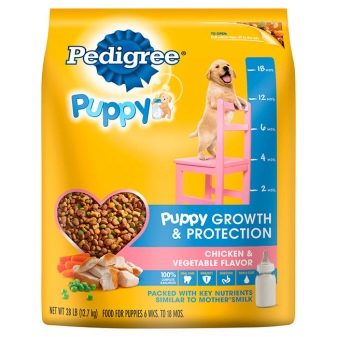
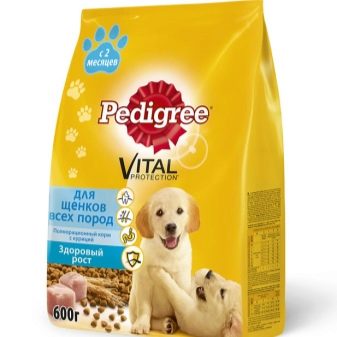
"Oscar"
Oscar food is relatively little known, but it can also be found on store shelves. Its composition is based on cereal components, hence its main characteristic features. The only advantage of the Oscar is its low price., and the disadvantages include an abundance of plant components, a lack of meat and the presence of preservatives.
A common feature of premium food is the presence of an increased proportion of meat (up to a quarter of the total composition), higher quality raw materials and a generally balanced composition. These feeds are considered to be more physiological than economy class feeds.
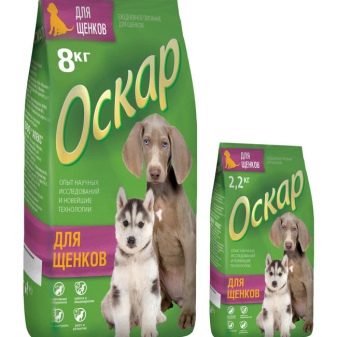
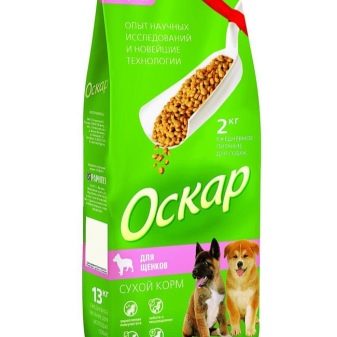
Purina dog chow puppy
The first of the premiums we'll be looking at is the Purina Dog Chow Puppy. This food is recommended for feeding puppies up to one year of age. Here the proportion of proteins and fats is observed, microelements and vitamins are rationally combined. The indisputable advantage of this raw material is the presence of probiotics in it.which improves the functioning of the puppy's digestive tract. Among other advantages, it is possible to note the complex composition, complete in the spectrum of vitamins and microelements, optimal energy value and feed safety. Of the minuses - a relatively low proportion of meat, the presence of flavorings and preservatives.
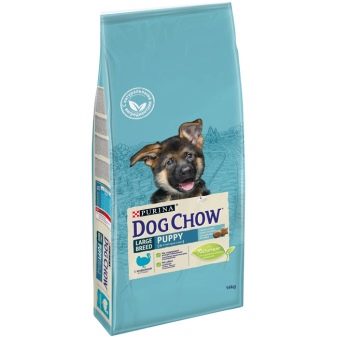
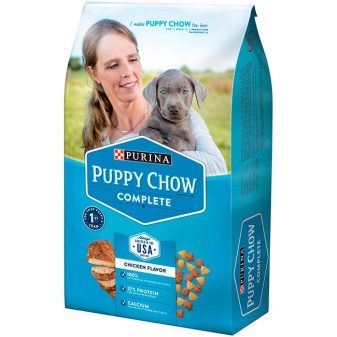
Purina pro plan
The next feed in this segment will be Purina Pro Plan. The brand produces a diverse line of food for a wide variety of breeds and ages. There is a wide palette of ingredients, which even includes turkey meat, corn, beets and an analogue of canine colostrum as a source of protein, carbohydrates, fiber and immune proteins for a growing puppy. Among the advantages, a large proportion of meat, a multivitamin set, and canned meat in the line were noted.
Cons - the presence of flavor enhancers and preservatives, as well as an abundance of corn allergenic components.
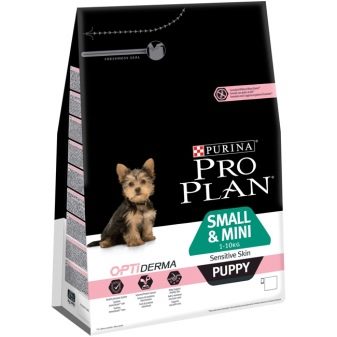

Royal canin
Many owners and breeders recommend paying attention to Royal Canin. The Junior range is specially formulated to feed puppies from 2 to 10 months of age. Among the distinctive characteristics, the presence of probiotics and phosphate compounds is also noted. Of the advantages - a rational composition, relative availability and safety for the puppy. Cons - the presence of preservatives and flavors, a large proportion of offal. And also there is no indication of how much meat is contained in the composition.
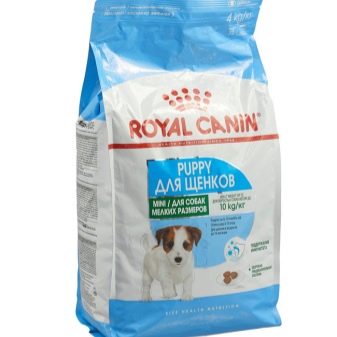
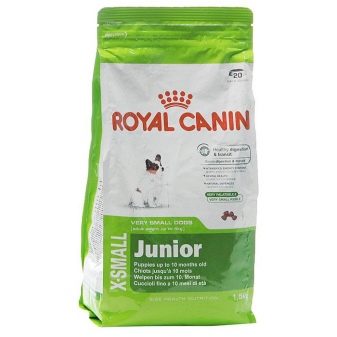
Hills
Special attention should be paid to Science Plan Puppy food from the manufacturer Hills, which can be used from the first month. The peculiarities of this option are the presence of antioxidants, as well as high nutritional value. Among the advantages are a balanced set of coenzymes and trace elements, a convenient form factor in the form of small granules. It can be easily found in stores, making purchasing a simple task. But this food, like some others with corn in the composition, can cause allergic reactions in puppies with sensitive digestive systems.

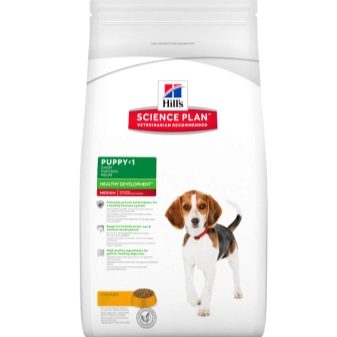
Advance Baby Protect
Advance Baby Protect can be administered from 3 weeks to months of age and is based on rice and chicken. It is easy to digest, the composition is selected correctly, and there is a huge selection of rulers. And also the absence of preservatives is declared. Of the minuses - the presence of corn and offal.

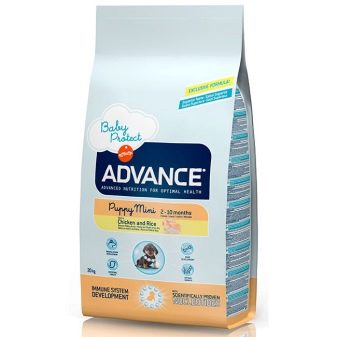
Nature's Protection
A good option for feeding your puppy is Nature's Protection food. It can be used from two months to a year. And also the food fully meets the requirements of the growing organism. The composition contains a variety of components, both animals (fish and poultry) and others (corn, yeast). This feed contains a rational mineral and vitamin composition. But it has a rather high cost, even despite the low content of natural meat.
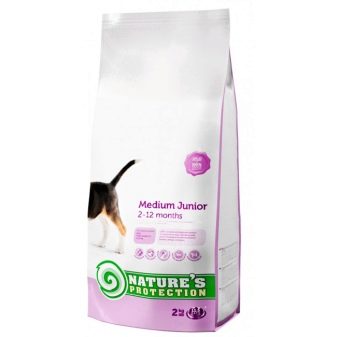
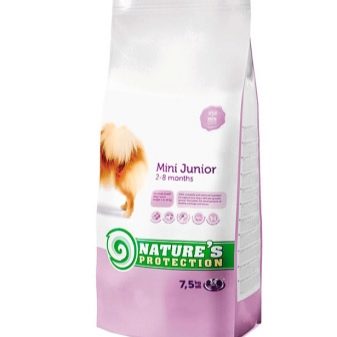
Acana
Holistic foods are good for the digestive system of a puppy, and the first one we will look at is Acana. This option is characterized by a low-carbohydrate and high-protein composition, the absence of rice, millet, corn inclusions. It is almost two-thirds meat, and the available fruits and oats, being rich in nutrients, are hypoallergenic. Its only drawback will be a very tangible price.
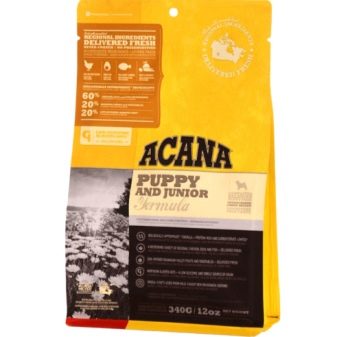
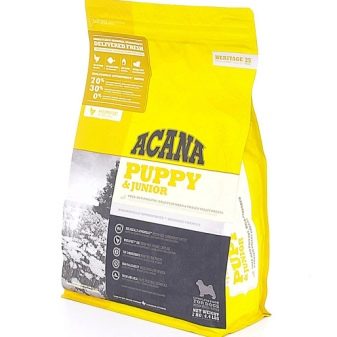
Now Fresh
The second option in this group would be Now Fresh, which, unlike most other feeds, is completely grain-free. It contains poultry (turkey, duck), salmon fillets, eggs, vegetables and fruits. Moreover, vegetables and fruits are quite exotic.
It contains many prebiotics and probiotics, as well as antioxidants that protect the puppy's body from oxidative stress.
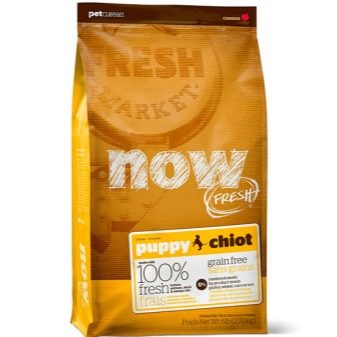
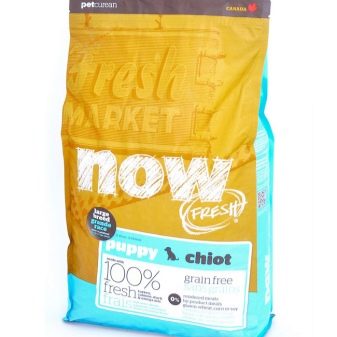
Grandorf
The Grandorf food is very popular, which also lacks grain components, dyes and flavors are excluded from the composition. The meat in this feed is a large part of the total composition. Pros - absolutely natural and ideal micronutrient composition. Of the minuses - the high (perhaps unjustifiably) price.
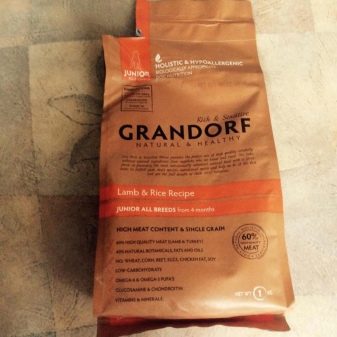
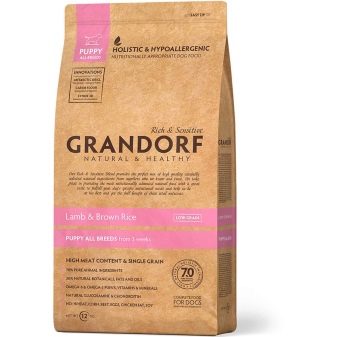
Criterias of choice
First of all, when choosing dry food for your puppy, decide on the price segment, while it is highly desirable to avoid the economy segment. It is preferable to choose the best that you can afford. A good option would be to feed the holistic segment.
Having decided on the price category, you need to familiarize yourself with the availability of food for puppies of the breed whose representative lives in your home. Further, having selected all these feeds, study the composition of each of them, paying attention to the amount of meat, herbal additives, preservatives, flavors and any incomprehensible ingredients.
For large breeds, the presence of protein is critical, because protein is the body's main building resource. For small dogs, it is very important that there are no plant components and dairy impurities. For medium breeds, in the first six months, you can use food intended for small breeds, and then for large breed dogs.

Feeding features
When feeding puppies with dry food it is important to consider the general rules.
- Do not skimp on food for your pet. Cheap options often contain surrogates, and they do not have a balance of micro- and macronutrients, which can ultimately negatively affect the health of your baby.
- Train your dog on a feeding schedule so that his digestive tract can adjust to a more rational mode of functioning. This diet will keep your dog's digestion healthy for years to come.
- Dry food can very often provoke thirst in dogs, therefore, during feeding, it is necessary to ensure the availability of fresh drinking water in a proportion of 3 milliliters per gram of dry food at all times to make the dog more comfortable to take this food.
- Dry food must be stored properly under certain conditions. Even though it is stored better than a natural diet or wet food, the food should still be in the shade and cool.
- It is physiological to stretch the introduction of complementary foods for 2-3 weeks, which will allow digestion to adapt to the new diet.

It is important to take into account that a puppy gets to new owners at the age of 1 to 3 months, and it is possible to train dogs of different breeds to self-feeding at different times.
The earliest date is three weeks from the date of birth. Already from this age, some breeds can be started to be fed, but at this time it is too early to introduce dry food.
Complementary food is introduced by adding a certain amount of dry food to natural food with a gradual decrease in the total volume of food supplied.
In the first steps, it is necessary to grind and soak granules of dry food in warm water. Dairy products such as yogurt or kefir can be used to increase the nutritional value. You should not use hot water for soaking, as some vitamins are thermolabile and can be destroyed by exposure to high temperatures.

Depending on whether the breed is large or small, you should switch to dry food at 3 months for large dogs and within six months for small dogs. It is important to take into account the anatomical and physiological characteristics of animals, such as a short gastrointestinal tract and thin enamel of the teeth, therefore, untimely delivery of food can lead to constipation, and coarse food can spoil the tooth enamel, which will develop into caries and destruction of dental tissue.
Serve your puppy in accordance with the manufacturer's instructions that come with the food. There should be a list of options for feeding the dog.
The puppies are given specialized food, this is due to the fact that in these foods there are small and very soft granules, more comfortable for the puppies, as well as the composition, balanced in a special way.
Up to two months, the puppy is fed 4-6 times a day, up to six months - 3 times, after - 2-3 times a day.

Reviews
Experts in general are ambivalent about the modes of introduction of dry food into the diet of puppies. Some veterinarians believe that dry food cannot be used in parallel with canned food, while others, on the contrary, consider the combined use of dry food with soft food more physiological.
As for the hosts, there are many positive reviews about the holistic class feedwhich help your puppy's digestive system to function properly. Many people speak negatively about economy and even premium food, noting the appearance in the puppy of such reactions as loose or irregular stools, bloating and allergies.


It can be concluded that it is recommended to use exclusively high-quality raw materials with a good natural composition for feeding the puppy.
For more information on feeding your puppy, see the next video.






































